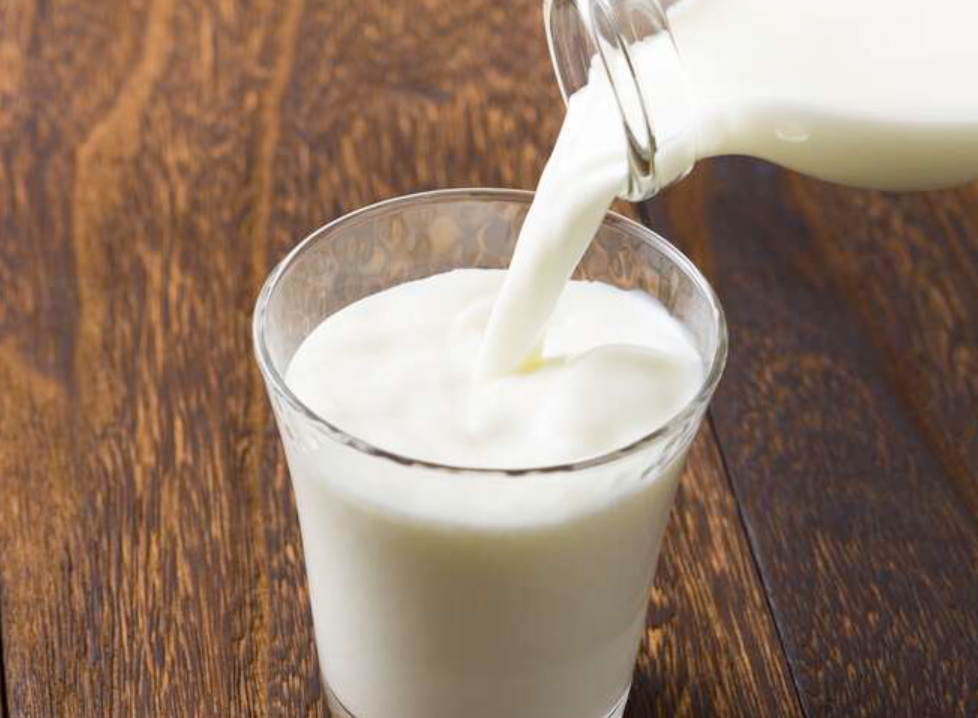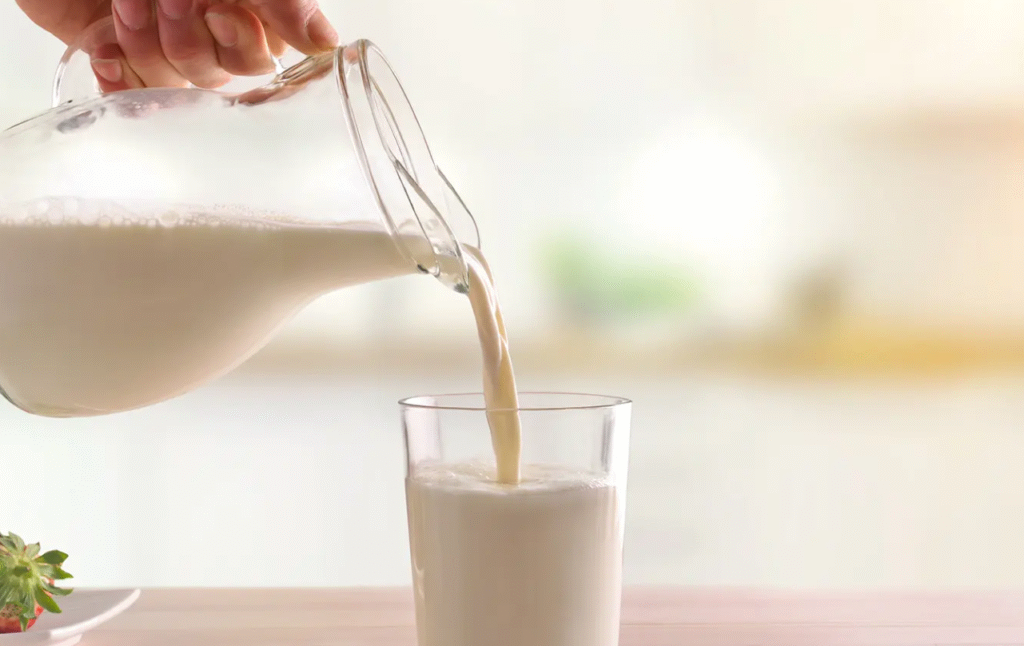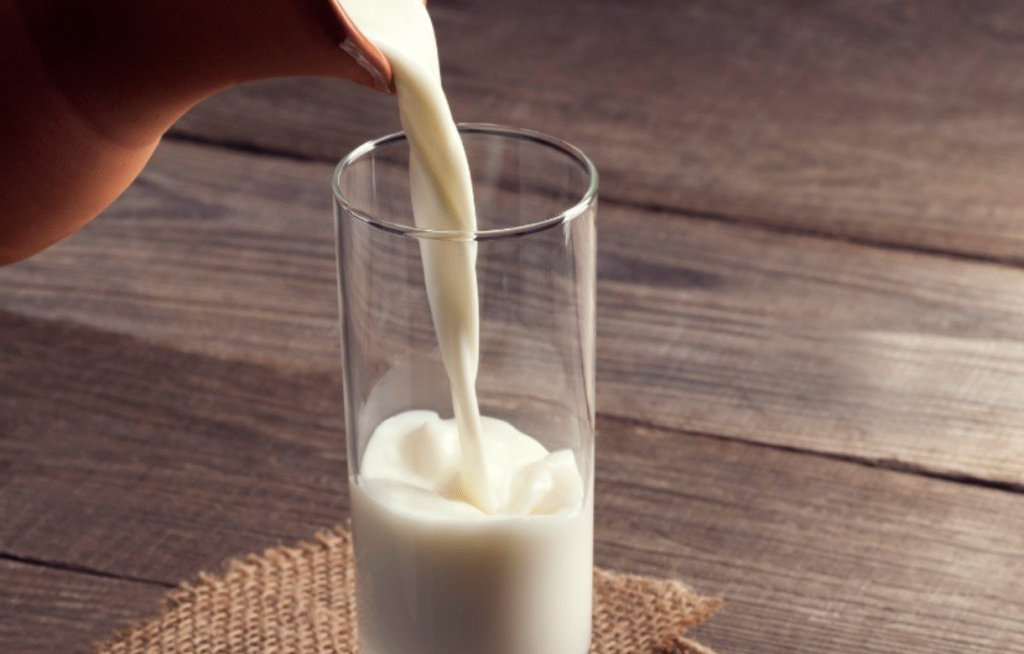Table of Contents
If you’re wondering which type of milk is better for you, then you’re in the right place. There are many factors to consider when making this decision—from nutritional content to taste and convenience. In this blog post, we’ll break down the differences between whole milk and 2 percent milk, so that you can make an informed choice about what kind of milk is best for your health. We’ll look at protein levels, fat content and more.
After reading through our guide, you’ll be equipped with the knowledge required to make an educated decision on whether whole or two-percent milk should become a staple item in your household!
What is Whole Milk?

Whole milk is the classic form of plain cow’s milk that we see in grocery stores. It contains 3.5% fat, which is why it has such a thick and creamy texture. Additionally, one cup of whole milk provides 8 grams of protein and 150 calories.
What is 2 Percent Milk?

Two-percent milk (or reduced-fat milk) is skimmed so that the fat content drops to only 2%. This means that it contains slightly fewer calories than its full-fat counterpart—only 122 per cup—but still provides 7 grams of protein per serving.
Benefits of Each Type of Milk
Whole milk provides more fat and calories than 2 percent, which is why it’s often recommended for those trying to gain weight or increase their calorie intake. It also has a richer flavor, making it a good choice for those who prefer the taste of full-fat dairy products.
Two-percent milk contains fewer calories and less fat, so it can be a great choice for those trying to lose weight or maintain their current body composition. Its slightly sweeter taste makes it a good option for those who don’t like the flavor of whole milk. It is also a healthier choice if you are watching your saturated fat intake.
Nutritional Values of Whole Milk vs 2 Percent Milk

Calorie Content
Whole milk contains more calories than 2 percent milk, with 150 calories per 8-ounce serving compared to 120 in 2 percent. It’s also higher in fat and saturated fat. The Dietary Guidelines for Americans recommends choosing low-fat or nonfat dairy products over whole milk because it can reduce your risk of obesity and heart disease, as well as other chronic conditions.
Fat Content
Whole milk contains 8 grams of total fat per serving, with 5 grams from saturated fat. Saturated fat has been linked to an increased risk of heart disease and other chronic diseases. If you are substituting whole milk for 2 percent, you might be adding more than 25 percent additional saturated fat in your diet.
Vitamin and Mineral Content
Whole milk provides more of some important vitamins and minerals than 2 percent. A cup of whole milk contains 28 percent of the recommended daily value for vitamin A, compared to only 20 percent in 2 percent milk. Whole milk is also richer in calcium, potassium and phosphorus.
Use in Cooking and Baking
Whole milk is a great choice for use in making ricotta cheese, ice cream and other dairy products. When used in baking, whole milk helps make cakes moister and more tender than those made with 2 percent milk. It also adds richness to sauces and other cooked dishes that call for milk as an ingredient.
Health Considerations

When choosing between whole and two-percent milk, it’s important to consider your overall health goals. If you are trying to reduce your calorie or fat intake, then 2 percent is the better option. However, if you are looking to increase your intake of certain vitamins and minerals, then whole milk may be a better choice. Either way, it’s important to talk to your doctor or nutritionist about which type of milk is best for you.
Which One Is Healthier?
When it comes to choosing between whole and two-percent milk, the decision ultimately boils down to personal preference and health goals. Whole milk is higher in fat and calories than 2 percent, making it a better option for those who are trying to gain weight or increase their calorie intake. However, if you’re looking for a healthier choice that’s lower in calories and fat, then two-percent milk is the way to go. Ultimately, it’s important to talk to your doctor or nutritionist about what type of milk is best for you.
Frequently Asked Questions | Whole Milk vs 2 Percent Milk
1. Does drinking whole or 2 percent milk make you fat?
No, neither type of milk will make you gain weight if consumed in moderation as part of an overall healthy lifestyle that includes regular physical activity and nutritious food choices. Consuming too much of any type of food can cause weight gain over time.
2. Is one type of milk better for your bones?
Yes, research has shown that higher-fat milk such as whole and 2 percent can help to promote healthy bones. The fat content helps your body absorb more calcium, which is important for bone health.
3. Is one type of milk better for people with diabetes?
Whole milk may be better for people with diabetes because it contains more essential fatty acids that are beneficial to overall health. However, it’s important to note that both types of milk can still provide important nutrients when consumed in moderation.
4. Is one type of milk more nutritious than the other?
Both types of milk are equally nutritious when consumed in moderation. Whole milk contains more fat-soluble vitamins such as Vitamin A and D, which can help to promote overall health. However, both types provide important nutrients that support a balanced diet.
5. Is one type of milk easier to digest than the other?
Whole milk is generally considered to be easier to digest than 2 percent milk because it contains less lactose (milk sugar). If you have difficulty digesting lactose, whole milk may be a better choice for you.
Conclusion
When choosing between whole milk and two-percent milk, there are several factors to consider, from taste preference to nutritional content. Ultimately, the choice is up to you! Before making a decision, be sure to do your own research—and consult with a qualified healthcare professional if necessary. With this guide as a starting point, you can make an informed and educated decision on which type of milk works best for you.
Read more at Ohsnap Cupcakes!